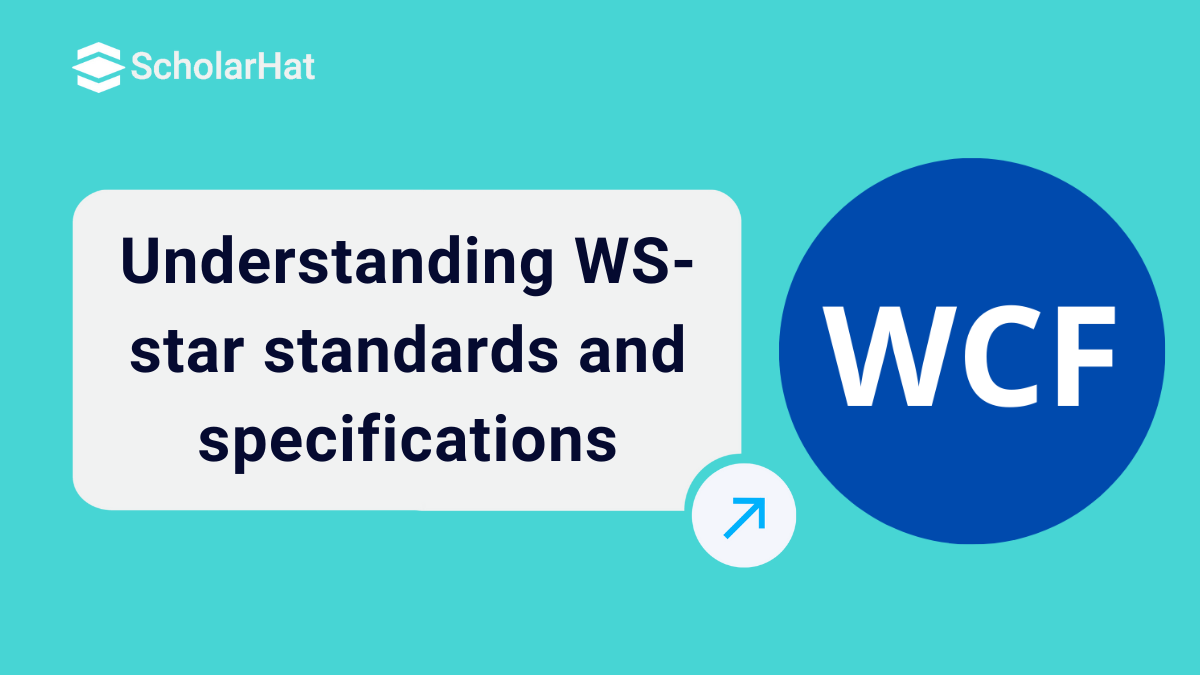12
DecUnderstanding WS-star standards and specifications
Web Service standards and specifications are known as "WS-*". These represents a set of protocols and specifications. These are used to extend the capability of web service.
These standard are defined by big leaders in the industry such as Microsoft, IBM, VeriSign, SUN and many others so that they can expose their services through a common protocol. These standard includes:
WS-I Profiles
The Web Services Interoperability Organization (WS-I) is an industry group to pro-mote interoperability across the stack of web services specifications. It publishes web service profiles, sample applications, and test tools for help. One of the popular profiles it has published is the WS-I Basic Profile. WS-I is governed by a Board of Directors, and Microsoft is one of the board members.
WS-Addressing
This is a mechanism that allows web services to communicate addressing infor-mation. With traditional web services, addressing information is carried by the transport layer, and the web service message itself knows nothing about its destination. With this new standard, addressing in-formation will be included in the XML message itself. A SOAP header can be added to the message for this purpose. The network-level transport is now responsible only for delivering that message to a dispatcher capable of reading the metadata.
WS-Security
This describes how to handle security issues within SOAP messages. It attaches signature and encryption information as well as security tokens to SOAP messages. In addition to the traditional HTTP/HTTPS authentications, it incorporates extra security features in the header of the SOAP message, working in the application layer. Also, it ensures end-to-end security.
There are several specifications associated with WS-Security, such as WS-SecureConversation, WS-Federation, WS-Authorization, WS-Policy, WS-Trust, and WS-Privacy.
WS-Reliable Messaging
This describes a protocol that allows SOAP messages to be delivered reliably between distributed applications. The WS-ReliableMessaging model enforces reliability between the message source and destination. If a message cannot be delivered to the destination, the model must raise an exception or indicate to the source that the message can't be delivered.
There are several Delivery Assurance options for WS-ReliableMessaging, including AtLeastOnce, AtMostOnce, ExactlyOnce, and InOrder.
WS-Coordination and WS-Transaction
WS-Coordination describes an extensible framework for providing protocols that coordinate the actions of distributed applications. The framework enables existing transaction processing, workflow, and other systems for coordination, to hide their proprietary protocols and to operate in a heterogeneous environment. Additionally, this specification provides a definition for the structure of the context and the requirements for propagating context be-tween cooperating services.
WS-Transaction describes coordination types that are used with the extensible coordination frame-work described in the WS-Coordination specification. It defines two coordination types: Atomic Trans-action (AT) for individual operations and Business Activity (BA) for long-running transactions.
What do you think?
I hope you will enjoy the tips while programming with Web Service and WCF. I would like to have feedback from my blog readers. Your valuable feedback, question, or comments about this article are always welcome.











